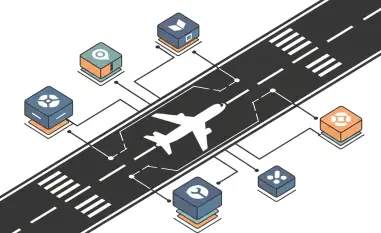In a rapidly transforming digital landscape, businesses are increasingly dependent on Software as a Service (SaaS) solutions, yet their confidence in SaaS security contrasts starkly with the alarming rate of breaches. A recent study highlights a disturbing trend: despite 91% of organizations expressing confidence in their SaaS security, a startling 75% have experienced breaches in the past year. This gap between perceived security and reality underscores the critical need for enhanced security measures and strategic reevaluation of SaaS practices.
SaaS Security Challenges
The predominant challenge facing organizations is the reliance on trust placed in SaaS providers rather than implementing verified internal security protocols. This misplaced confidence is not only alarming but suggests significant vulnerabilities. The study calls into question organizations’ understanding of SaaS-specific risks, which often remain obscured by broader cybersecurity frameworks lacking in specificity when addressing SaaS issues.
Another aspect of the challenge lies in the fragmentation within security measures. While some organizations utilize dedicated SaaS security posture management solutions, others lean on broader cybersecurity platforms such as security service edge and cloud access security broker tools. The lack of tailored solutions for SaaS-specific threats makes these organizations susceptible to breaches, further validating the need for specialized security approaches.
Importance and Relevance of SaaS Security Research
Given the heightened dependency on SaaS platforms, this research underscores the pressing importance of advancing security protocols that are dynamic and intelligence-driven to respond effectively to evolving threats. SaaS represents a significant component of today’s digital infrastructure, and the potential risks associated with its use have far-reaching implications not just for organizations but for society as a whole. The findings drive home the necessity for proactive measures, ensuring that security adapts to innovations and threats swiftly.
This research also addresses the societal impact of integrating artificial intelligence into cybersecurity. With AI expected to dominate future discussions in cybersecurity, understanding its complexities and associated risks becomes essential. The importance of treating AI tools as identities that require governance is emphasized, urging vigilant scrutiny and regulation.
Research Methodology, Findings, and Implications
Methodology
The study employed a comprehensive methodological framework encompassing data collection from diverse SaaS platforms and cybersecurity tools. It utilized advanced analytics to evaluate security measures against breach incidents and assessed organizational responses through surveys and expert interviews. The approach allowed for a thorough examination of the existing landscape and identification of gaps in security strategies.
Findings
One of the most striking findings is the clear deficiency in proactive configuration management and real-time monitoring among organizations. The study identifies emerging priorities within SaaS security posture management, including enhanced threat detection, comprehensive SaaS application inventories, and unauthorized connection detection. Additionally, it notes the burgeoning popularity of hybrid security models designed to deliver all-encompassing protection for critical applications while ensuring broader platform coverage.
Implications
The study’s implications are profound, signifying a shift in how organizations perceive and manage SaaS security. There’s a strong emphasis on transitioning from periodic audits to continuous monitoring and clarifying the ownership of SaaS security within teams. Moreover, prioritizing high-risk applications and blending broader tools like SSE with specialized SSPM solutions can significantly bolster security efforts. Addressing emerging risks posed by AI adoption requires new strategies, urging security teams to adapt and innovate continuously.
Reflection and Future Directions
Reflection
Reflecting on the study reveals several challenges encountered during the research process, particularly in garnering comprehensive data due to varied tools and protocols across SaaS platforms. Overcoming these difficulties involved implementing adaptive research strategies and leveraging expert insights to fill gaps. However, the complexity of SaaS calls for deeper exploration in specific areas such as AI integration, indicating further opportunities for expansion.
Future Directions
The pathway forward includes focusing on unanswered questions concerning the balance between AI advancements and potential cybersecurity threats they could introduce. Further research might explore the efficacy and scalability of hybrid security models, providing insights into their implementation across different organizational scales. The continuous evolution of cybersecurity necessitates ongoing vigilance and innovative approaches to stay abreast of potential risks.
Conclusion
The study’s findings highlight critical vulnerabilities in SaaS security postures that demand urgent attention and adaptation to counter evolving threats. Addressing these issues is crucial for safeguarding organizational data and infrastructure, as well as preparing for the next wave of AI-driven security landscapes. Researchers and security professionals must prioritize dynamic security measures, ensuring that as SaaS continues to proliferate, it is accompanied by robust and adaptive security. These advancements will be pivotal in shaping the future of cybersecurity in the digital era.













